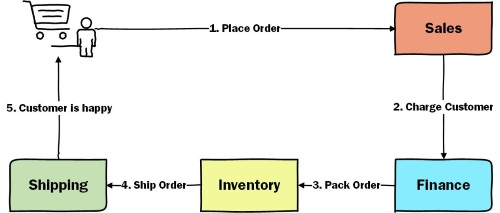In the previous two posts in this series, we’ve seen some examples of long running processes and how to model them. In this article we’ll see where to store the state of a long running process. This is an important topic when talking about long running processes because long running means stateful. We’ll discuss three patterns: storing the state in the domain entity, in the message or in a process instance. To better explain these patterns, we’ll implement subflows from the Order Fulfillment enterprise process.

You can find the code on my GitHub account.
Store the state in the Domain Entity
This is probably the most used approach of the three, although it’s not the best choice in most cases. But it’s overused because it’s simple: you just store the state in the domain entity.
Requirement
Let’s start with what Finance needs to do when it receives the OrderPlaced event: charge the customer. To do that, it will integrate with a 3rd party payment provider. The long running process in this case handles two message:
- the OrderPlaced event – in which case it will send a ChargeCreditCardRequest
- the ChargeCreditCardRespone
Implementation
Since we only have two transitions, we could store the state in the Order entity.

Let’s have a look at the code. We’ll use NServiceBus, but the code is readable even if you don’t know NServiceBus or .Net.